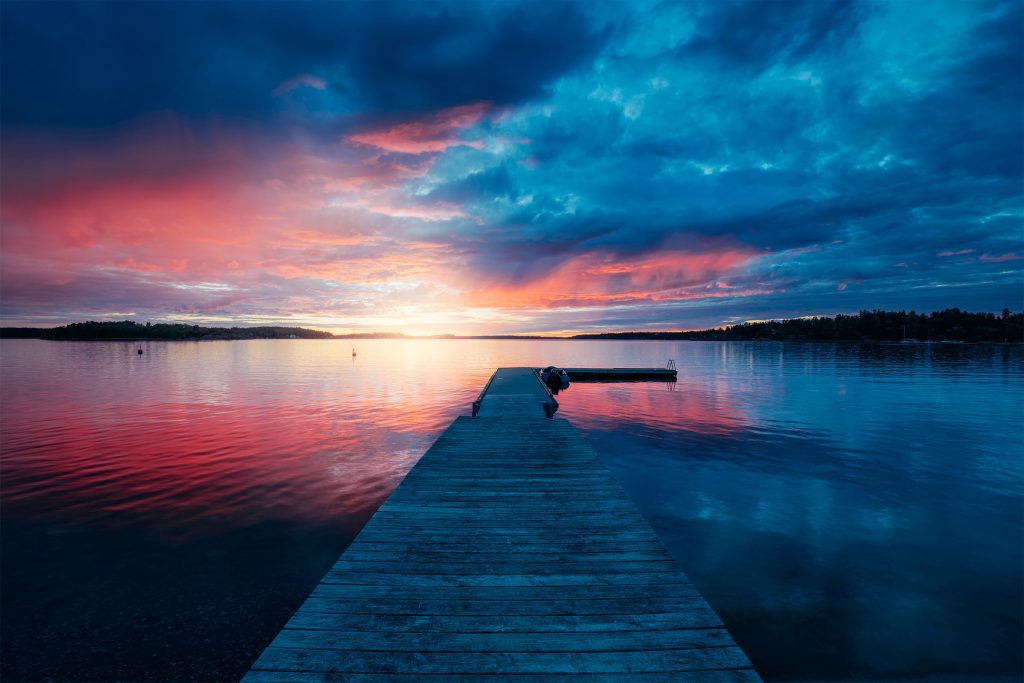It may be hard to believe but sunlight has color and you have to consider it as an active element of your compositions. During the day, the sunlight goes from shades of icy blue and violet before sunrise to shades of pink, orange, and gold after the sunset and then slowly goes to white by midday. In the afternoon, sunlight returns to shades of gold and orange to become bluish after the sunset. Light color influences not only camera settings and framing. It also changes the atmosphere of a photo, the feelings the viewer is going to perceive, and the general tone of a composition. That’s why you should always plan your landscape photo session with light color in mind.
The blue hour
The last hour before sunrise and the first hour after sunset are called the blue hours or twilight. The sun is still under the horizon but it announces its presence by coloring the sky in shades of blue and violet. The intensity of light is very low but with the right ISO value, long exposures, and a tripod you can take amazing landscape photos.
The blue light creates low color temperatures, dark shadows, and low contrast. Your photos will look dramatic. Furthermore, you can convey bleak feelings such as coldness, loneliness, and sadness. When everybody sleeps scary things can happen. To add a positive note to your compositions, try capturing some bright lights such as the lights of a distant village, the breaking of the dawn, or even stars.
Photo by Alberto Restifo on Unsplash
The golden hour
The first hour after sunrise and the last hour before sunset are called the golden hours. The sun is just a little bit above the horizon and produces stunning skies with dramatic shades of pink, orange, and red. Many photographers consider the golden hours the best time to take landscape photos. The intensity of the light is still low but high enough to allow you to take photos without a tripod and using fast exposures. During the golden hours, you can use backlighting and create silhouettes.
The golden light creates high color temperatures. You still have strong shadows and low contrast but the atmosphere is completely changed. Your photos will convey warmness, tenderness, and joy. Even winter landscapes will seem warmer during the golden hours. Create atmospheric photos with subtle shapes and blended colors. Make sure you take a lot of photos because during the golden hours the scenery changes rapidly.
Photo by Johannes Plenio on Unsplash
Taking landscape photos at midday – white light
Many photographers avoid taking landscape photos at midday. The white light washes out the colors and produces flat and dull photos. It’s very easy to overexpose your photos and the sky, a major element in most landscape photos, is almost white and uninteresting. However, white light creates strong reflections, which may be helpful when you’re looking for them (e.g. when you photograph lakes). It also provides enough light for fast exposures and allows you to use small apertures and create deep depths of field. Furthermore, not all days are bright and sunny. You can take amazing landscape photos at midday on cloudy days.
Photo by Alberto Restifo on Unsplash
The direction, intensity, and color of sunlight depend on the time of day. Therefore, you may plan your compositions in advance and make the best of available conditions. Remember that everything that enters the frame has a role and influences the message of your photo. And this includes the sunlight parameters as well.
Cover Photo by Anders Jildén on Unsplash

